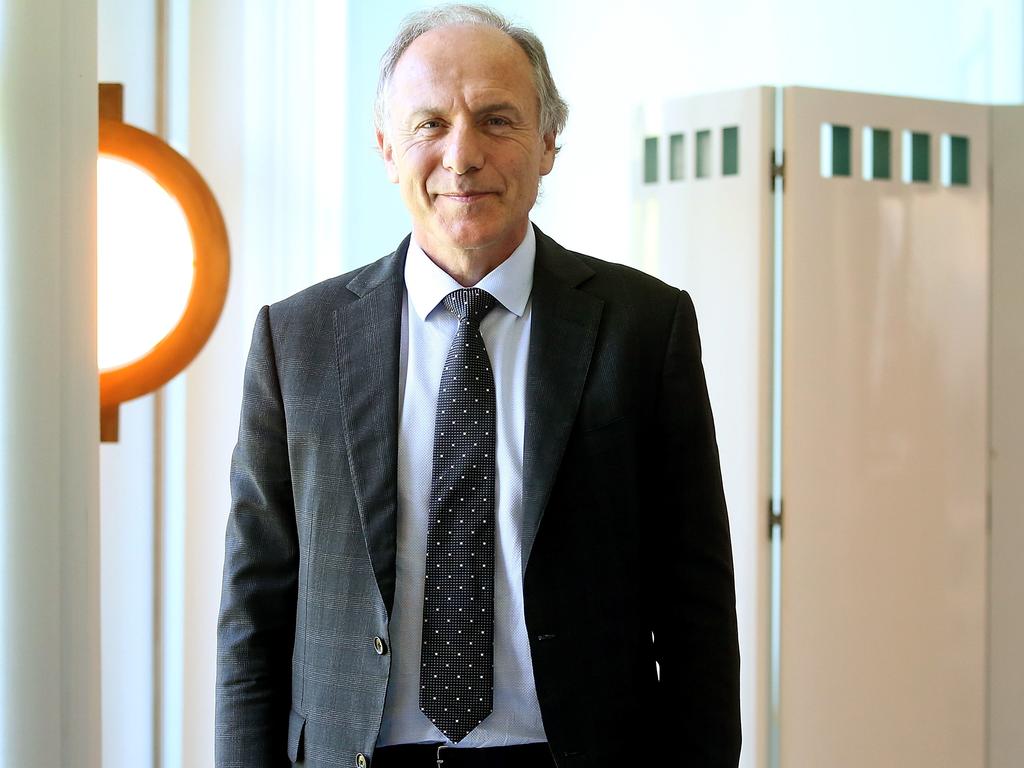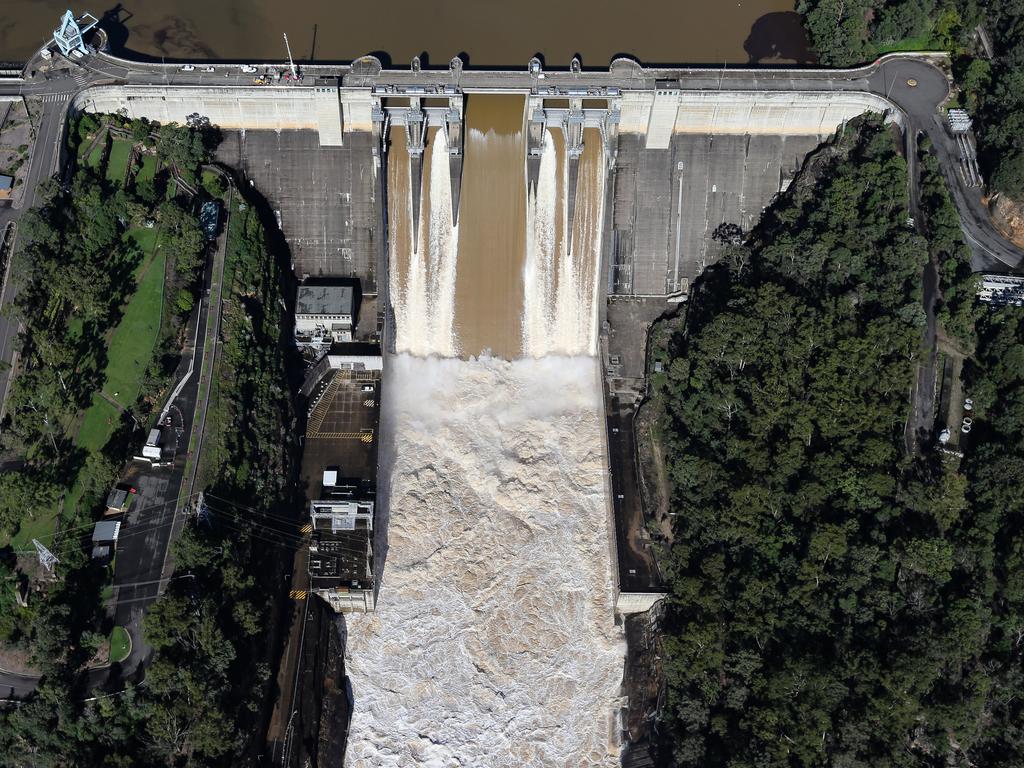Mission Zero: Dr Alan Finkel answers your climate questions
RECAP: Dr Alan Finkel has explained why China’s climate targets are different to Australia which could investigate nuclear power. Watch the forum now.
The fact that China had a net zero target for 2060 when the developed world had a target date of 2050 was “partly fairness and partly reality,” Dr Alan Finkel said.
The former Chief Scientist, speaking in a live forum with Joe Hildebrand, said China was bringing millions of people out of poverty, “and they deserve to improve their lifestyle”.
As a manufacturing powerhouse for the world, China’s ability to decarbonise was limited compared to some other countries, Dr Finkel said.
“They can do nothing immediately, or in percentage terms as rapidly, as the more developed countries,” he said.
Dr Finkel said it was true that China’s emissions were “huge and getting bigger”.
“They want to know that everybody’s pitching in. Everyone has to contribute,” he said.
Asked about the prospect of nuclear power for Australia, he said nuclear power was “definitely worth investigating”, but he sidestepped calling for it, saying it was a “question for society and elected politicians to answer”.
“If we did legalise it, no doubt nuclear power would have all the merits of despatchable clean electricity that would make the system easier to operate,” he said.
While small module reactors have been proposed as a solution to Australia’s energy needs, Dr Finkel said the reality was a city the size of Sydney would require up to 100 such units.
Dr Finkel said there was federal legislation that prevented its uptake.
Nuclear power produced zero emissions, although it required tight safety regulation, he said.
“Nuclear is much safer from a point of view of health,” he said.
Even solar power represented a danger to human health as installation of solar panels could be a fatal activity.
Catch up on the Q&A in the video above.
Dr Finkel was not convinced about the economics of nuclear power, but smaller reactors might prove to be more economical.
He said hydrogen was a “very important piece” of the energy puzzle, but “it’s not itself the solution,” he said.
He said hydrogen could be used to produce steel, rather than metallurgical coal.
Desalination plants designed to provide drinking water for Australian cities could be used to boost our hydrogen industry, Dr Finkel said.
Electrolysis machines that separate water into hydrogen and oxygen molecules require a very high quality of water, but there was no reason this could not be done by using sea water that was run through desalination plants, he said.
“It sounds expensive, but it’s not expensive,” he said.

Asked about the role natural gas will play in Australia’s energy transition, he said critics of the fuel were “letting perfection get in the way of the very good”.
Despite its emissions, there was a role for gas to play as a “supporting fuel” in Australia’s energy mix, he said.
“Build as much solar and wind as you can afford, and when it’s not sufficient, turn on the gas,” he said.
This would provide stability in the system - a condition known in the industry as “firming,” he added.
Dr Finkel is the nation’s leading figure in our response to the climate change challenge.
He was Australia’s Chief Scientist for five years until the end of last year.
He was then appointed Special Adviser to the Australian Government on Low Emissions Technology.
This new role means that Dr Finkel will lead the government’s efforts to help develop and commercialise new low-emissions technologies that could revolutionise how Australia reduces its carbon dioxide emissions.
Prior to this Dr Finkel was chair of the Expert Advisory Panel for the CSIRO Report on Climate and Disaster Resilience and also led the National Hydrogen Strategy, the “Finkel Review” into the National Electricity Market and National Research Infrastructure Roadmap.
A neuroscientist, engineer and entrepreneur, Dr Finkel is resolutely focused on a positive approach to tackling climate change by embracing new and better technologies to replace old and obsolete ones.
He is also determined to establish practical and pragmatic solutions to reducing CO2 emissions rather than just setting targets without a clear pathway to reaching them.
Earlier this year he published the hugely influential “Getting to Zero: Australia’s Energy Transition”, a Quarterly Essay which has become the de facto policy position of the Australian Workers Union, the nation’s leading natural resource industries union.
There is no one more expert, more influential or more well-balanced to answer questions on climate change and our national response. Here he answers come of your questions below.
IS THE WORLD REALLY GETTING WARMER? ISN’T IT TRUE THAT SINCE THE 1990S TEMPERATURES HAVE ACTUALLY PLATEAUED?
Not at all; temperatures have not plateaued. If you look at the global surface temperatures measured by satellites and ground-based measurement stations since 1990, there has been an upward trend and an overall 0.7 degrees increase. Occasionally, there are dips for a few years, but they are followed by increases. Those fluctuations are what you expect to see in the real world. What counts is the trend, and the trend is steadily upwards.
BUT ISN’T CLIMATE CHANGE NATURAL? WE’VE HAD ICE AGES BEFORE AND THEN THE WORLD HEATED UP AGAIN.
Yes, indeed, the world has cycled between ice ages and warm periods, with the ice ages repeating roughly every 100,000 years. Ice core samples going back about 800,000 years tell us that the temperature rose much more slowly coming out of the glacial periods than we are experiencing now. More importantly, if we don’t reduce our greenhouse gas emissions, the global temperature will increase well above the highest level seen in the last 800,000 years.
So what if sea levels rise a couple of inches? What difference will it really make?
A few inches of sea level rise would not be a problem if it occurred over a long time and that were the only change. However, on current emissions trajectories, the global sea level is expected to be up to 25 centimetres higher by 2050 than at the start of this century, and about 70 centimetres higher by 2100. This sea level rise combined with increasingly severe cyclones will lead to destructive storm surges. It could be argued that we can relocate or protect low lying roads, power plants, sewage treatment plants and buildings, but this will take substantial money and effort.

EVEN IF THE WORLD DOES GET A BIT WARMER, WILL THAT REALLY BE SO BAD? DON’T MORE PEOPLE DIE FROM COLD THAN HEAT?
The United States Environmental Protection Agency reports that heat is the leading weather-related killer in the United States and that the risk of heat-related deaths from heatwaves is expected to increase. It is not sufficient to look only at the average rise, which globally is already 1.2 degrees above the pre-industrial baseline (1850 to 1900) and in Australia is more than 1.4 degrees since national records began in 1910. The bigger problem is that the risk of heat-related deaths will be exacerbated by ever greater temperature extremes. In Australia, in 2019 there were over 40 extremely warm days, more than triple the number in any of the years prior to 2000.
WHAT ABOUT ALL THE PREDICTIONS THAT HAVE BEEN PROVEN WRONG? THEY SAID OUR DAMS WOULD DRY UP BUT NEXT THING THEY’RE FULL. DOESN’T THIS SHOW THE MODELLING IS FLAWED?
In the difficult world of modelling, often the predictions are right, occasionally they are wrong. The IPCC bases its scenarios on the averaged outputs of many sophisticated, data-driven models. As a sanity test, the models are tested by feeding them with historical data from twenty or thirty years ago to see whether they can predict the current climate. Over the years they have been passing this kind of test with increasing accuracy.

VOLCANOES EMIT WAY MORE CARBON DIOXIDE THAN HUMANS DO. WHY ARE MAN-MADE EMISSIONS THE PROBLEM?
The statement is not correct. The annual emissions from volcanoes is between 150 million and 600 million tonnes of carbon dioxide per year. By comparison, in 2019 the global emissions of carbon dioxide from human activity were over 36 billion tonnes — 60 to 240 times greater than the annual emissions from volcanoes.
Australia is only responsible for a tiny fraction of emissions. Why should we do anything while massive emitters like China don’t have to meet the same target?
This argument denies the importance of being a team player. It’s like a member of a football team deciding to take it easy in the upcoming match on the basis that his effort will not make much difference given that there are 17 other players. Climate change is a global problem that will only be solved by all countries taking on the challenge to reduce their net emissions to zero.
SAY I’M A WORKER IN THE FOSSIL FUEL INDUSTRY. IF COAL SHUTS DOWN, I COULD LOSE MY JOB NEXT MONTH. WHY SHOULD I CARE ABOUT WHAT HAPPENS IN THE NEXT 30 YEARS?
As global demand shifts towards zero and low emissions products, there will be new jobs manufacturing electrolysers that crack water into hydrogen and oxygen, and producing low emissions building materials such as steel, aluminium and cement, and chemical products such as ammonia and fertiliser. Local, state and national governments are aware of the difficulties faced by individual workers and will work with industry to develop new job opportunities. We have the time to do this carefully, because global demand for coal is expected to decline slowly and demand for natural gas is expected to increase this decade before starting to fall. There are more opportunities to be had by going with the flow than by resisting the global trends.

IT’S FINE FOR OTHER COUNTRIES TO TALK ABOUT NET ZERO BUT AUSTRALIA’S BIGGEST EXPORTS ARE IRON ORE AND COAL AND GAS AND AGRICULTURE. WON’T THAT HURT US MORE?
No, to the contrary. Getting to zero will bring enormous opportunities for Australia’s export industries. The demand for iron ore to make steel will continue, driven by growth in developing countries. The difference will be that the steelmakers who buy our iron ore will increasingly want to know that it was extracted and handled with zero emissions. The steelmakers of the future will need lots of low emissions hydrogen to run their new steel mills and Australia can supply that hydrogen. Global natural gas use is projected to increase this decade before slowly declining. And when it comes to agriculture, domestic and international customers increasingly want green products, including the food they eat.
IF THE REST OF THE WORLD SETS A NET ZERO TARGET AND AUSTRALIA DOESN’T, WHAT WILL HAPPEN TO OUR ECONOMY?
Australia’s economic success for nearly 200 years has benefited greatly from exports. Globally, customers want to buy zero and low emissions products, thus it is up to us to export the products they want to purchase. Car and phone manufacturers want low emissions steel and aluminium for the cars and phones of the future, and Australian companies such as Fortescue and Tomago have already started responding to their needs.

BUT WON’T MY POWER PILLS GO UP? AND WON’T THERE BE MORE BLACKOUTS?
If the shift to renewable electricity is managed thoughtfully, then to the contrary, electricity bills should be low because they will take advantage of the ever falling price of solar and wind electricity. There is no reason for there to be blackouts if we invest in sufficient short term and long term storage, and plan for the worst case weather patterns rather than the average. Also, it is worth noting that during the shift to zero emissions electricity, the system will be more secure if we have continued access to gas fired electricity generation to support the large scale use of wind and solar electricity.
WHAT IF WE DO SIGN UP? ISN’T IT JUST A NUMBER?
Is a child who dreams of winning Olympic gold ambitious? Not if she doesn’t turn up for training. You would only call her ambitious if she has a dream, commits to a plan, and trains at every opportunity. Targets need to be accompanied by actions. In the Australian Government’s Low Emissions Technology Investment Roadmap, we have a number of cost and time targets, accompanied by initiatives to help industry achieve them.
EVEN IF AUSTRALIA IS BETTER OFF IF WE COMMIT TO NET ZERO AND TRANSITION, WILL I BE BETTER OFF? WILL MY FAMILY? WHO ARE THE WINNERS AND LOSERS?
The more successful we are at globally limiting climate change, the better off our farmers will be and the healthier our coral reefs. Our industries and exporters will produce products for the new economy that will contribute to national economic growth. And it is easier to share the benefits equitably if our economy is strong and growing.
SO WHAT IS THE SOLUTION?
In a word – electricity. But implementing the solution is much more difficult than it sounds because of the enormous scale. Our modern civilisations require huge amounts of energy, and nearly three quarters of global greenhouse gas emissions come from the use of fossil fuels to give us that energy.
Step 1: Convert our existing electricity system to a zero emissions supply. Use some of that electricity to make hydrogen to be used when electricity itself is not convenient.
Step 2: Convert our cars, trucks, trains and short haul aircraft to use electricity stored in batteries and hydrogen instead of petrol and diesel. This transformation of our transportation system will require almost a doubling of our annual electricity generation.
Step 3: Convert our building heating, industrial heating, steam generation, hot water and cooking to operate from electricity and hydrogen. This will take the annual electricity consumption to three times greater than what we use today.
These three steps can overlap, so that we work on all of them at the same time. The end point is what I call the Electric Planet, where all the energy we need comes from zero emissions electricity.
More Coverage
Young and old can be part of the new economy, building our prosperity while eliminating the greenhouse gas emissions that are warming our planet and causing climate change.
For more on this series go to: www.missionzero2050.com.au
Share your feedback or story: missionzero2050@news.com.au
Read related topics:China





